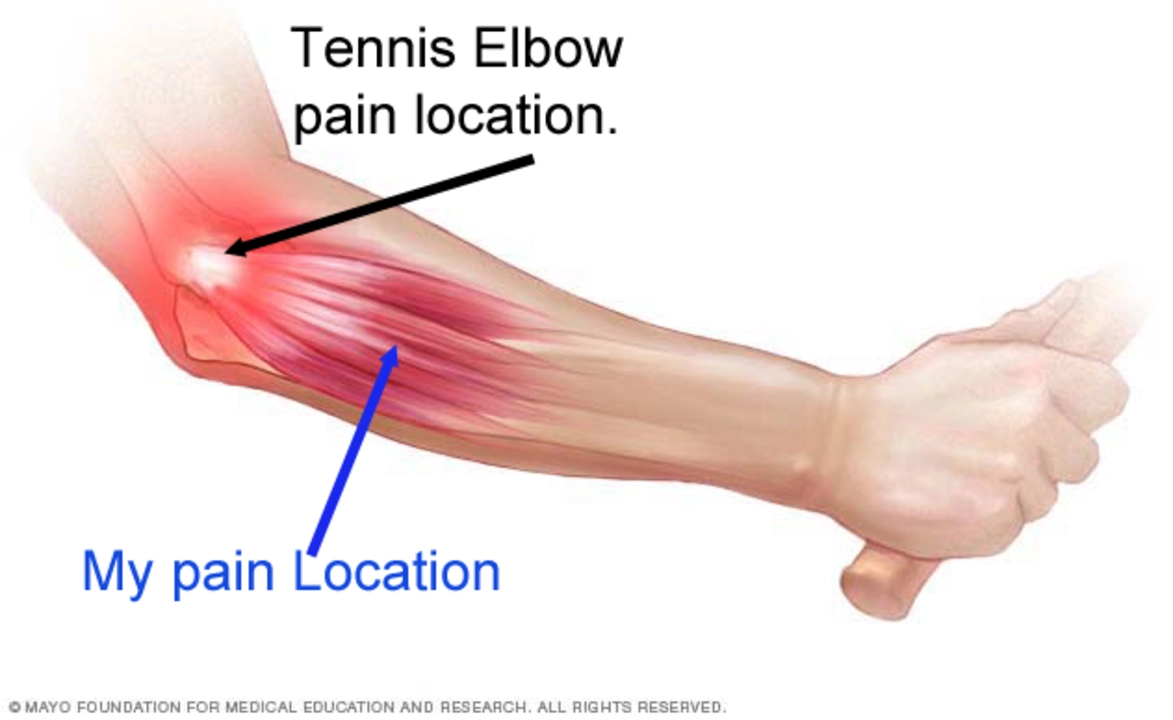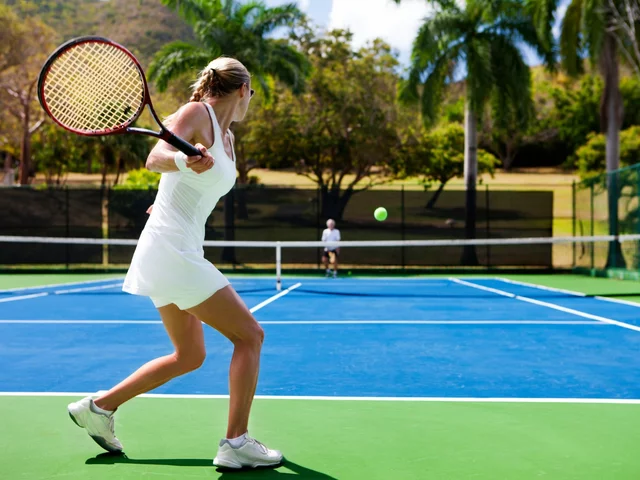
Understanding Tennis Elbow: Causes and Symptoms
If you've ever experienced pain in your elbow, you may have wondered if it's tennis elbow. Tennis elbow, also known as lateral epicondylitis, is a common condition that causes pain and inflammation in the tendons that connect the forearm muscles to the lateral epicondyle, the bony bump on the outer part of the elbow. In this section, we'll explore the common causes and symptoms of tennis elbow, helping you better understand this condition and how it may be affecting you.
Though it's called tennis elbow, this condition isn't exclusive to tennis players. In fact, any repetitive activity that involves gripping, twisting, or lifting with the forearm can potentially lead to tennis elbow. This includes activities such as gardening, typing, or even carrying heavy bags. Overuse and strain on the forearm muscles can cause small tears in the tendons, leading to inflammation and pain.
Some common symptoms of tennis elbow include pain and tenderness on the outer part of the elbow, stiffness, and a weakened grip. The pain may worsen when lifting, gripping, or twisting objects, and it often becomes more severe over time if left untreated.
Diagnosing Tennis Elbow: What to Expect
When it comes to diagnosing tennis elbow, a thorough examination is key. Your doctor will likely ask you about your medical history, any recent activities that may have caused the condition, and the specific symptoms you're experiencing. In this section, we'll discuss what to expect during the diagnostic process for tennis elbow.
During the physical examination, your doctor will press on the affected area to determine the exact location of the pain. They may also ask you to perform various movements with your arm and hand, such as gripping or lifting, to evaluate your range of motion and the severity of your discomfort. In some cases, your doctor may order imaging tests, such as X-rays or an MRI, to rule out other conditions that could be causing your elbow pain.
Once a thorough evaluation has been completed, your doctor will be able to determine if tennis elbow is the cause of your elbow pain and discuss appropriate treatment options with you.
Treatment Options for Tennis Elbow
Fortunately, there are several effective treatment options available for those suffering from tennis elbow. In this section, we'll explore the various treatments that can help reduce your pain and inflammation, improve your range of motion, and ultimately, get you back to enjoying your favorite activities without discomfort.
Initial treatment for tennis elbow typically involves rest, ice, and over-the-counter pain relievers to help manage the pain and inflammation. Your doctor may also recommend wearing a forearm brace or using a supportive wrap to help alleviate pressure on the affected tendons. Physical therapy is another common treatment option, as it can help improve flexibility and strength in the forearm muscles, promoting healing and preventing future injuries.
In more severe cases or when conservative treatments don't provide sufficient relief, your doctor may recommend other options such as corticosteroid injections, platelet-rich plasma (PRP) therapy, or even surgery to repair the damaged tendons.
Preventing Tennis Elbow: Tips and Best Practices
Preventing tennis elbow is just as important as treating it. By taking a proactive approach to your health and incorporating some simple best practices into your daily routine, you can significantly reduce your risk of developing this painful condition. In this section, we'll discuss some effective strategies for preventing tennis elbow.
One of the best ways to prevent tennis elbow is to take regular breaks during activities that involve repetitive arm movements or gripping. This allows your muscles and tendons to rest and recover, reducing the risk of overuse injuries. Additionally, practicing proper technique and using the right equipment for your activities can also help prevent strain on your forearm muscles.
Regular stretching and strengthening exercises for your forearm muscles can also be beneficial in preventing tennis elbow. By keeping these muscles strong and flexible, you'll be better able to handle the demands of repetitive activities without causing damage to your tendons.
Recovering from Tennis Elbow: What to Expect
Recovery from tennis elbow can vary depending on the severity of your condition and the treatments used. In this section, we'll discuss what you can expect during your recovery process and some tips for ensuring a smooth and successful healing journey.
For mild cases of tennis elbow, you may begin to experience relief from your symptoms within a few weeks of starting conservative treatments such as rest, ice, and pain relievers. More severe cases may require a longer recovery period, particularly if invasive treatments like injections or surgery are involved. It's important to follow your doctor's advice and adhere to any prescribed physical therapy or rehabilitation exercises to ensure the best possible outcome.
Returning to your regular activities should be done gradually and with caution, as pushing yourself too hard or too soon can result in reinjury. Be patient with your body and listen to its signals as you work your way back to your pre-injury level of activity.
Conclusion: Managing and Overcoming Tennis Elbow
Tennis elbow can be a painful and frustrating condition, but with the right knowledge, treatment, and prevention strategies, you can effectively manage and overcome it. Remember to listen to your body, seek appropriate medical care, and practice patience as you work towards recovery. By doing so, you'll be well on your way to enjoying your favorite activities once again, free from elbow pain.






Write a comment